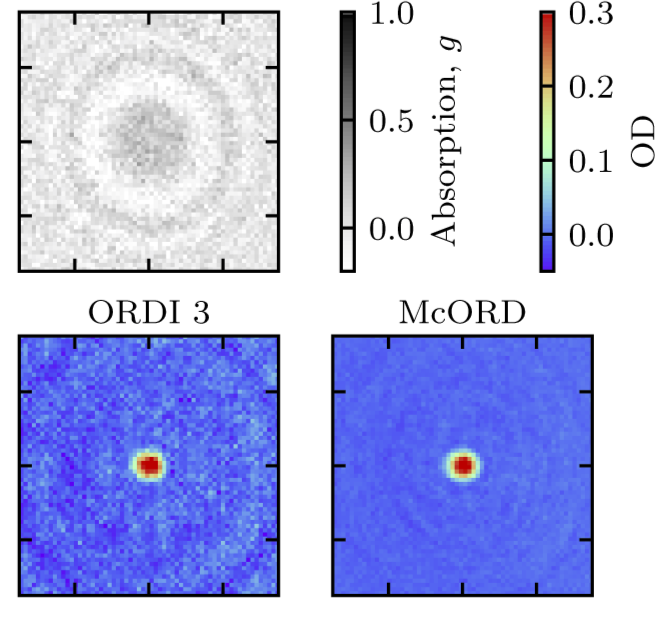Multiple-camera defocus imaging of ultracold atomic gases

In cold atom experiments, each image of light refracted and absorbed by an atomic ensemble carries a remarkable amount of information. Numerous imaging techniques including absorption, fluorescence, and phase-contrast are commonly used. Other techniques such as off-resonance defocused imaging (ORDI, [1–4]), where an in-focus image is deconvolved from a defocused image, have been demonstrated but find only niche applications. The ORDI inversion process introduces systematic artifacts because it relies on regularization to account for missing information at some spatial frequencies. In the present work, we extend ORDI to use multiple cameras simultaneously at degrees of defocus, eliminating the need for regularization and its attendant artifacts. We demonstrate this technique by imaging Bose-Einstein condensates, and show that the statistical uncertainties in the measured column density using the multiple-camera off-resonance defocused (McORD) imaging method are competitive with absorption imaging near resonance and phase contrast imaging far from resonance. Experimentally, the McORD method may be incorporated into existing set-ups with minimal additional equipment.
Multiple-camera defocus imaging of ultracold atomic gases; A. R. Perry, S. Sugawa, F. Salces-Carcoba, Y. Yue, and I. B. Spielman; Opt. Express 29 17029–17041 (2021). doi: 10.1364/OE.422981
